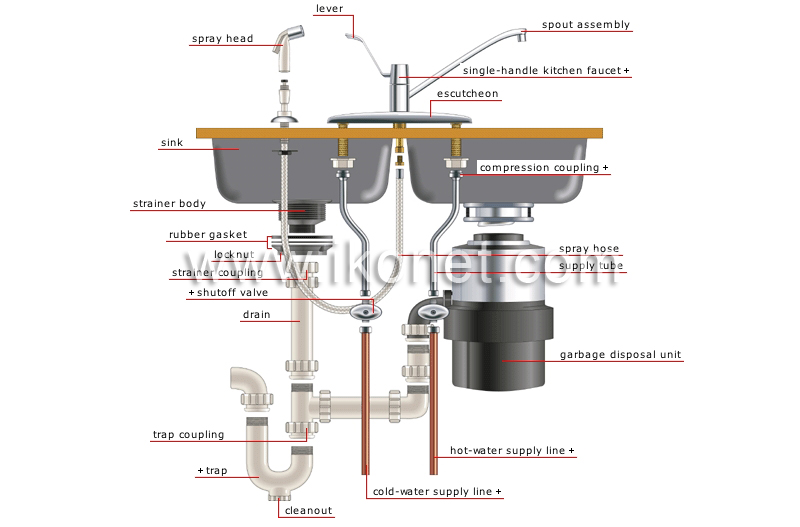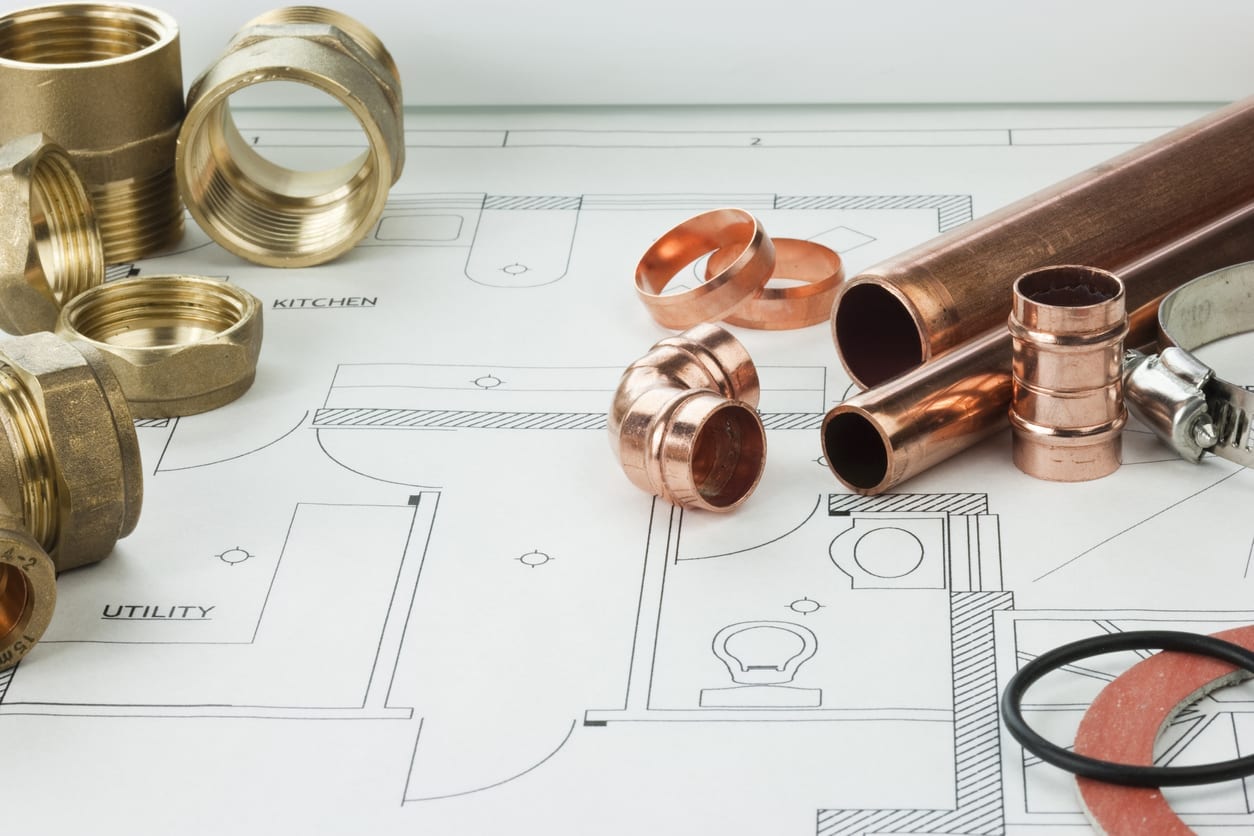Exploring Your Home's Plumbing System Anatomy
Exploring Your Home's Plumbing System Anatomy
Blog Article
This post down the page involving Plumbing Installation 101: All You Need to Know is quite compelling. You should take a peek.

Recognizing how your home's plumbing system works is essential for every single house owner. From delivering tidy water for drinking, cooking, and showering to safely removing wastewater, a properly maintained plumbing system is crucial for your family's wellness and convenience. In this thorough guide, we'll explore the detailed network that comprises your home's plumbing and deal suggestions on upkeep, upgrades, and dealing with typical issues.
Intro
Your home's plumbing system is greater than simply a network of pipes; it's an intricate system that ensures you have accessibility to tidy water and effective wastewater removal. Recognizing its components and how they collaborate can aid you stop costly repair services and guarantee every little thing runs smoothly.
Standard Parts of a Pipes System
Pipelines and Tubing
At the heart of your pipes system are the pipes and tubes that carry water throughout your home. These can be constructed from various products such as copper, PVC, or PEX, each with its benefits in terms of longevity and cost-effectiveness.
Fixtures: Sinks, Toilets, Showers, etc.
Components like sinks, toilets, showers, and bath tubs are where water is used in your home. Recognizing just how these fixtures link to the pipes system helps in detecting problems and preparing upgrades.
Shutoffs and Shut-off Factors
Shutoffs control the circulation of water in your pipes system. Shut-off valves are vital during emergencies or when you need to make repair services, enabling you to separate parts of the system without disrupting water flow to the whole house.
Supply Of Water System
Key Water Line
The main water line attaches your home to the municipal water or a private well. It's where water enters your home and is distributed to various fixtures.
Water Meter and Pressure Regulatory Authority
The water meter actions your water use, while a stress regulatory authority makes sure that water moves at a secure stress throughout your home's pipes system, protecting against damages to pipes and fixtures.
Cold Water vs. Hot Water Lines
Comprehending the distinction between cold water lines, which supply water directly from the main, and warm water lines, which lug warmed water from the water heater, helps in fixing and preparing for upgrades.
Drain System
Drain Pipeline and Traps
Drain pipelines lug wastewater far from sinks, showers, and bathrooms to the drain or sewage-disposal tank. Traps protect against sewage system gases from entering your home and additionally trap debris that could trigger obstructions.
Air flow Pipes
Ventilation pipes permit air into the drainage system, preventing suction that could slow drain and create catches to empty. Proper ventilation is crucial for keeping the stability of your plumbing system.
Significance of Proper Water Drainage
Guaranteeing proper drain avoids backups and water damages. On a regular basis cleaning up drains and maintaining catches can protect against expensive repair work and expand the life of your pipes system.
Water Heating Unit
Types of Hot Water Heater
Hot water heater can be tankless or typical tank-style. Tankless heating units warmth water on demand, while containers keep heated water for prompt use.
Updating Your Plumbing System
Factors for Upgrading
Upgrading to water-efficient components or replacing old pipelines can enhance water quality, minimize water costs, and enhance the worth of your home.
Modern Plumbing Technologies and Their Advantages
Check out technologies like wise leakage detectors, water-saving toilets, and energy-efficient water heaters that can conserve money and lower ecological impact.
Price Considerations and ROI
Compute the upfront prices versus lasting cost savings when taking into consideration pipes upgrades. Lots of upgrades pay for themselves via minimized utility expenses and fewer fixings.
Just How Water Heaters Link to the Plumbing System
Recognizing exactly how hot water heater link to both the cold water supply and hot water circulation lines helps in detecting issues like not enough hot water or leakages.
Maintenance Tips for Water Heaters
Routinely purging your hot water heater to remove debris, inspecting the temperature level settings, and evaluating for leaks can expand its life expectancy and boost power efficiency.
Usual Plumbing Concerns
Leaks and Their Causes
Leakages can occur as a result of maturing pipelines, loosened fittings, or high water stress. Attending to leaks immediately prevents water damage and mold development.
Obstructions and Blockages
Clogs in drains pipes and toilets are typically caused by flushing non-flushable things or an accumulation of grease and hair. Utilizing drain screens and bearing in mind what drops your drains pipes can prevent blockages.
Indicators of Pipes Problems to Watch For
Low water stress, slow-moving drains pipes, foul odors, or unusually high water costs are signs of potential pipes troubles that need to be dealt with promptly.
Pipes Upkeep Tips
Routine Inspections and Checks
Arrange annual plumbing examinations to catch issues early. Try to find indicators of leaks, corrosion, or mineral accumulation in faucets and showerheads.
DIY Upkeep Tasks
Simple tasks like cleansing tap aerators, checking for commode leakages using dye tablet computers, or insulating subjected pipes in cool climates can stop significant plumbing problems.
When to Call a Specialist Plumbing
Know when a plumbing concern requires expert know-how. Trying intricate repair services without correct knowledge can cause even more damages and greater repair work expenses.
Tips for Lowering Water Usage
Easy routines like taking care of leaks promptly, taking much shorter showers, and running full tons of washing and recipes can preserve water and lower your utility expenses.
Eco-Friendly Pipes Options
Take into consideration lasting pipes products like bamboo for flooring, which is durable and environment-friendly, or recycled glass for countertops.
Emergency situation Preparedness
Steps to Take During a Pipes Emergency situation
Know where your shut-off valves lie and how to switch off the water system in case of a burst pipeline or major leak.
Value of Having Emergency Situation Get In Touches With Helpful
Keep get in touch with info for local plumbing professionals or emergency situation services readily offered for fast feedback during a plumbing situation.
Ecological Effect and Conservation
Water-Saving Components and Devices
Setting up low-flow faucets, showerheads, and toilets can significantly decrease water use without giving up performance.
DIY Emergency Fixes (When Relevant).
Temporary fixes like making use of air duct tape to patch a dripping pipeline or putting a bucket under a leaking faucet can minimize damages up until a professional plumber gets here.
Final thought.
Comprehending the makeup of your home's plumbing system encourages you to preserve it effectively, saving money and time on repair services. By following routine upkeep routines and remaining informed about contemporary pipes technologies, you can ensure your plumbing system runs efficiently for many years to find.
The Anatomy of Your Home s Plumbing System
Understanding the anatomy of your home s plumbing system is essential for any homeowner. It not only helps in identifying potential issues but also facilitates effective communication with professionals when repairs or upgrades are needed. Your home s plumbing system is more than just pipes and faucets; it s a complex network that ensures the efficient and hygienic flow of water in and out of your house. In this blog, we ll dissect the crucial components of your home s plumbing system. For those in Antelope Valley, Brock Plumbing is your trusted partner for all your plumbing needs, ensuring your system functions smoothly and efficiently.
Water Supply System
Main Water Line: This is where your home s plumbing system begins. The main water line connects your home to the public water supply or a private well. Pipes and Shut-off Valves: Pipes distribute water throughout your home. Shut-off valves are crucial for controlling the flow of water and making repairs without shutting off the entire system. Drainage System
Drain Pipes: These pipes carry waste and water away from sinks, toilets, and showers. Vents: Vents allow sewer gases to escape and help maintain proper pressure in the drainage pipes, ensuring efficient flow of wastewater. Traps: Every fixture has a trap, a U-shaped pipe that holds water and prevents sewer gases from entering your home. The most common is the P-trap under sinks. Fixtures and Appliances
Fixtures and appliances are the most interacted with parts of your plumbing system. They include sinks, toilets, showers, dishwashers, and washing machines. Each fixture and appliance has its own supply and drainage connection, ensuring they receive clean water and can dispose of wastewater effectively.
Water Heating System
Your water heater is a crucial component, providing hot water to various fixtures and appliances in your home. It can be tank-based or tankless, with each type having its own set of advantages and maintenance requirements. Regular maintenance is essential to ensure efficient operation and extend the lifespan of the unit.
Sump Pump
In areas prone to flooding or with high water tables, a sump pump is an essential part of the plumbing system. It s installed in the lowest part of your basement or crawlspace and pumps out water that accumulates, preventing flooding and protecting your home from water damage.
Septic System
Homes that are not connected to a municipal sewer system have a septic system and an underground wastewater treatment structure. Understanding how to maintain your septic system is crucial to prevent backups, odors, and early system failure.
Conclusion
Your home s plumbing system is a complex and essential network, ensuring the efficient and hygienic flow of water in and out of your property. Understanding its key components helps in maintaining it properly and identifying issues before they escalate into major problems. For residents in Antelope Valley, Brock Plumbing is dedicated to providing top-notch services, ensuring that every part of your plumbing system is in perfect working order. Trust our team of professionals to handle all your plumbing needs, ensuring your home remains comfortable, safe, and well-maintained.
https://brockplumbinganddrains.com/blog/the-anatomy-of-your-homes-plumbing-system/

I recently found that entry about Plumbing Installation 101: All You Need to Know while browsing the web. Sharing is nice. You won't know, you could be helping someone out. I praise you for your time. Come back soon.
Call Us Today Report this page